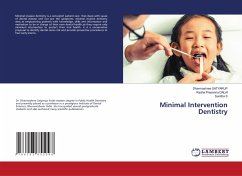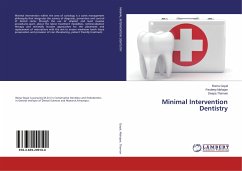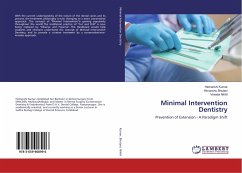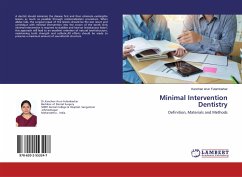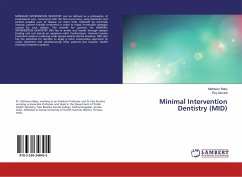The term minimal intervention is relatively new in dentistry and has been introduced to suggest to the profession that it is time for changes in the principles of operative dentistry. Minimal intervention in relation to dental caries covers a vast area of diagnosis, risk assessment, prevention and control (arrest and prevention of progression). Its approach starts with diagnosis and risk assessment of the disease in order to allow for proper treatment decision.Different scenarios for management of initial carious lesion include noninvasive management and operative care. Recent advancements in management of caries has started a trend towards the conservation of tooth structure and also bonding techniques which provides an alternative to mechanical retention. The ultimate goal of minimal intervention is to extend the life of restored teeth with as less intervention as possible. When operative care is indicated, it should be aimed at "PREVENTION OF EXTENSION" rather than "EXTENSION FOR PREVENTION.
Bitte wählen Sie Ihr Anliegen aus.
Rechnungen
Retourenschein anfordern
Bestellstatus
Storno


